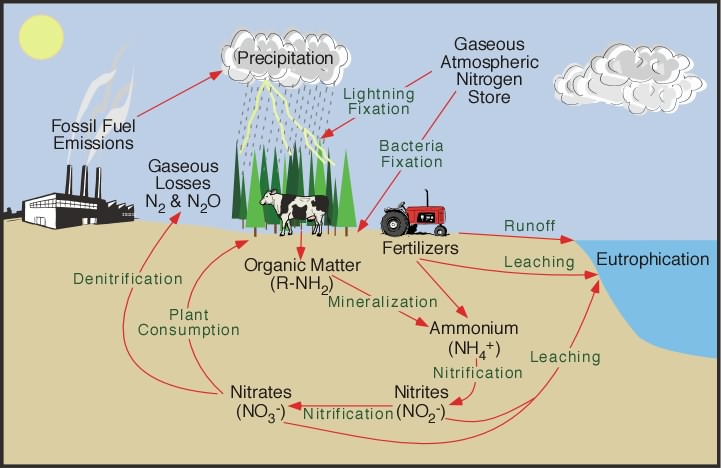Kingdom- Animalia
Phylum- Chordata
*Subphylum- Vertebrata
Class- Mammalia
*Subclass- Placenta
4/30/13
Order- Primate
*Superfamily- Hominoideae
Family- Hominidae
Genus- Homo
Species- sapiens
*Subspecies-sapiens
II. 1st Modification
*Sub...and Super... (due to the original system being unable to fit all species being discovered)
III. 2nd Modification
Added "Domain" above kingdom. There are 3 domains of life.
A. Bacteria- Have no internal membranes-no organelles, no nucleus, Peptidoglycan in cell wall, I kind of RNA polymerase, no Introns, no Histones (protein beads that DNA wraps around) in DNA, circular chromosome, different Ribosomes.
B. Archea- No internal membranes, organelles, or nucleus. Circular DNA, no peptidoglycon, several RNA polymerases, Introns, Histones
C. Eukarya- Have internal membranes, nucleus, organelles, no peptidoglycon, rod-like DNA, several RNA polymerases, Introns, and Histones.
Archae and Bacteria are both prokaryotes, but Eukarya and Archea are more closely related to each other.
Tuesday, April 30, 2013
Monday, April 29, 2013
April 29, 2013
Categorizing Life
I. The Linnaeus Classification System
Kingdom- eg. Animalia
Phylum- Chordata
Class-Mammalia
Order- Primates
Family- Hominidae
Genus- Homo
Species- Sapiens
I. The Linnaeus Classification System
Kingdom- eg. Animalia
Phylum- Chordata
Class-Mammalia
Order- Primates
Family- Hominidae
Genus- Homo
Species- Sapiens
Tuesday, April 16, 2013
04/16/13


(the Carbon Cycle, Image A; the Nitrogen Cycle, Image B)
Nitrogen Cycle Continued:
Legume (any plant with seeds in a pod; examples are: alfalfa, peas)
Legumes have nitrogen fixing bacteria in their roots.
SYMBIOTIC RELATIONSHIP.
Tuesday, April 9, 2013
4/9/13
Gross Productivity - Total amount of Glucose produced by the producers.
Net Productivity - G.P. - Amount of Glucose metabolized by the producers, food energy available to consumers.
Initial = 0.8 mg/L of oxygen
Dark = 0.3 mg/L
Light= 0.9 mg/L
 Initial-Dark = 0.5 = Respiration Rate = 0.5/24
Initial-Dark = 0.5 = Respiration Rate = 0.5/24
Light-Initial = Net Productivity Rate = 0.1/24
Light-Dark = Gross Productivity Rate = 0.6/24
The Carbon Cycle
Net Productivity - G.P. - Amount of Glucose metabolized by the producers, food energy available to consumers.
Initial = 0.8 mg/L of oxygen
Dark = 0.3 mg/L
Light= 0.9 mg/L
 Initial-Dark = 0.5 = Respiration Rate = 0.5/24
Initial-Dark = 0.5 = Respiration Rate = 0.5/24Light-Initial = Net Productivity Rate = 0.1/24
Light-Dark = Gross Productivity Rate = 0.6/24
Ecosystems
I. Biogeochemical CyclesThe Carbon Cycle
Monday, April 8, 2013
4/8/13
II. Food=Energy
Sun--Photosynthesis (Gross Primary Productivity)-->Producers--Cell Metabolism (90%)-->Heat
Producers--(10%)--> 1 Consumers/Herbivores (Net Primary Productivity)--(90%)-->Heat
1 Consumers--(10%)-->2 Consumers (1% Gross)--(10%)-->3 Consumers (0.1% Gross)--(10%)-->4 Consumer (0.01% Gross)
2, 3, & 4 Consumers are all Carnivores
Decomposers on every level
10% Rule--Only 10% of the energy produced by photosynthesis is available to Consumers. 90% is metabolized and "lost" as heat.
Food Pyramid of Biomass

90% is in the Producers (bottom)
9% Herbivores (middle)
1% Carnivores (top)
(You can make a living as a cow masseuse in Japan. Just saying.)
Biological Magnification--when fat-soluble toxins like pesticides (DDT) & metals (Pb, Mercury)
2 Ospreys 10lbs<---Large Fish 100lbs<---Small Fish 1000lbs<---Insects 10,000lbs<---Algae 100,000lbs
25 mg/L DDT 2.5 mg/L 0.25 mg/L 0.025 mg/L 0.0025 mg/L DDT
Sun--Photosynthesis (Gross Primary Productivity)-->Producers--Cell Metabolism (90%)-->Heat
Producers--(10%)--> 1 Consumers/Herbivores (Net Primary Productivity)--(90%)-->Heat
1 Consumers--(10%)-->2 Consumers (1% Gross)--(10%)-->3 Consumers (0.1% Gross)--(10%)-->4 Consumer (0.01% Gross)
2, 3, & 4 Consumers are all Carnivores
Decomposers on every level
10% Rule--Only 10% of the energy produced by photosynthesis is available to Consumers. 90% is metabolized and "lost" as heat.
Food Pyramid of Biomass

90% is in the Producers (bottom)
9% Herbivores (middle)
1% Carnivores (top)
(You can make a living as a cow masseuse in Japan. Just saying.)
Biological Magnification--when fat-soluble toxins like pesticides (DDT) & metals (Pb, Mercury)
2 Ospreys 10lbs<---Large Fish 100lbs<---Small Fish 1000lbs<---Insects 10,000lbs<---Algae 100,000lbs
25 mg/L DDT 2.5 mg/L 0.25 mg/L 0.025 mg/L 0.0025 mg/L DDT
Subscribe to:
Comments (Atom)